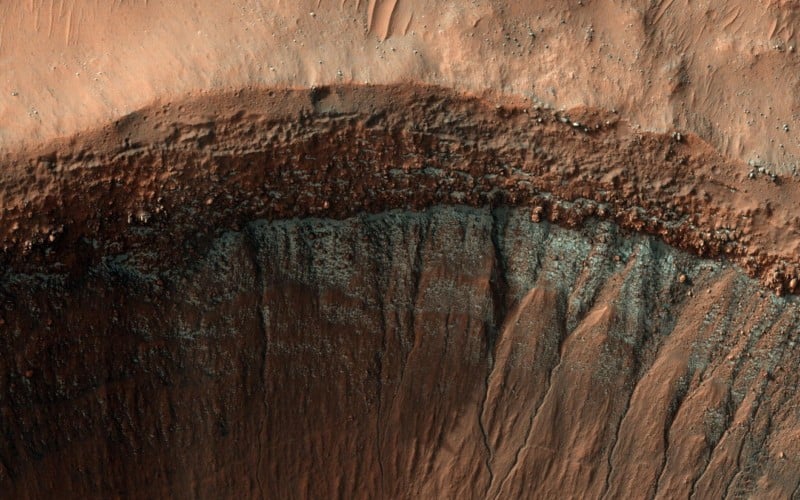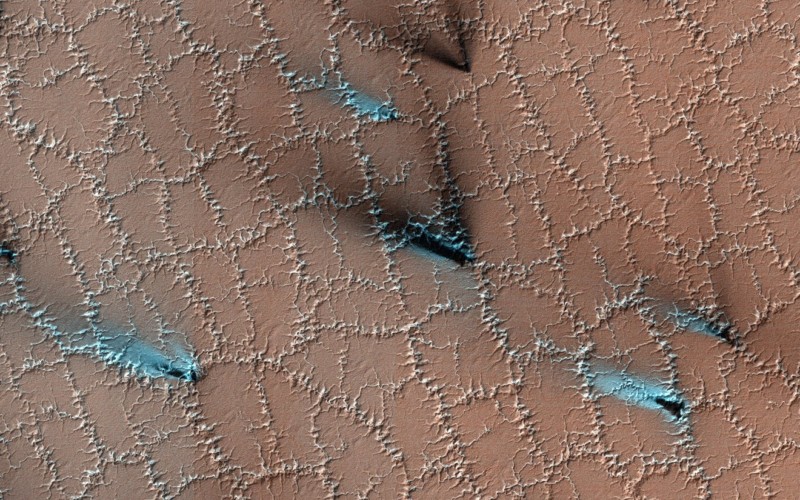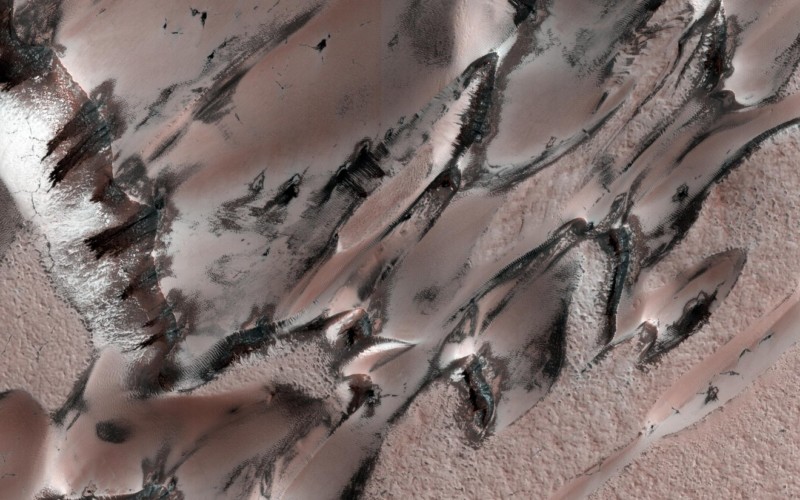Winter on Mars: NASA Explains Martian Frost and Ice With Photos
NASA has released a Martian weather report complete with photos taken of the Red Planet’s icy landscape.
Mars isn’t associated with snowy scenes, but scientists from NASA’s Jet Propulsion Laboratory have explained that winter is very much present there.
“This time of the year, many of us are dreaming of a winter wonderland here on Earth,” says Mars scientist Sylvain Piquex.
“But did you know that Mars, our closest neighbor in the solar system, also experiences snow, ice, and a real winter?”
![]()
The above photo, taken on NASA’s HiRISE camera, shows frosted dunes in the depths of winter. The picture was taken close to the Red Planet’s winter solstice when the Sun was just a few degrees above the horizon.
“Mars is a very dry place, but if you go to the right location, you will find water and ice, just like we have on Earth. But also, C02 ice or dry ice,” says Piquex.

In the 1970s, the Mars Viking lander observed frost forming on the ground far away from the poles.
“So we know that the frost similar to what we have on Earth, forms in those landscapes on Mars. That’s cool,” says Piquex.
“We also know from Mars Odyssey that we have two kinds of frost. We can observe water frost in many other locations than what Viking observed. But also C02 frost, something that we don’t have on Earth.
“It is extremely cold where you will find C02 ice, something like minus 190 degrees Fahrenheit. The C02 ice does not melt. Instead, it goes back from solid to gas directly in the atmosphere. That leads to the formation of really unique surface features.”


“No region of Mars gets more than a few feet of snow, most of which falls over extremely flat areas,” NASA adds. “Cold as it is, don’t expect snow drifts worthy of the Rocky Mountains.”
Image credits: All photo credits: NASA/JPL-Caltech/University of Arizona.